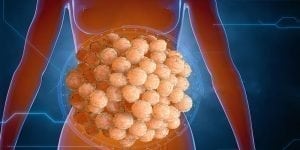Researchers at the Center for Genomic Regulation (CRG) in Barcelona have identified a potential new diagnostic marker that predicts the successful and efficient development of mammalian oocytes. The results could pave the way for creating artificial eggs in the laboratory and help researchers study the causes and treatments of fertility disorders, as well as test the effects of drugs and chemicals on women’s reproductive capacity. The research results were published in The EMBO Journal.
Oocyte Development and Chromosomes
Humans have 23 pairs of chromosomes. Males and females share 22 pairs, with the 23rd pair being the sex chromosomes. Males typically have one X and one Y chromosome, while females have two X chromosomes. This presents a potential problem for female cellular machinery, as two active X chromosomes produce an overdose of gene products, which is fatal for developing embryos or leads to cancer in adulthood. To avoid this scenario, female cells inactivate one X chromosome by switching off its genes and compacting it.
Little is known about how X chromosome inactivation affects the development of reproductive cells. In mammals, oocytes develop from germ cells, which are progenitor cells that migrate from early embryonic tissue into the developing gonads. Germ cells then undergo meiosis, an important chromosome rearrangement process that is responsible for the genetic uniqueness of each germ cell. Germ cells mature and eventually transform into functional sperm or eggs. To answer this question, researchers at the Center for Genomic Regulation (CRG) developed an X-chromosome reporter system (XRep) that allowed them to study how the chromosome changes over time during germ cell development in vitro.
When applied to female mouse cells, the method revealed a carefully orchestrated act of X-chromosome yo-yoing. When an X chromosome was briefly inactivated and then reactivated, it made germ cells enter meiosis and transform into egg cells four times more efficiently than germ cells that never “turned off and on” their X chromosome. By contrast, germ cells that were unable to inactivate the X chromosome at all or reactivated it too quickly showed abnormal gene expression and cell differentiation patterns.
The study also found that cells with two active X chromosomes divided more quickly and readily reverted to a state of pluripotency. According to the authors, these features resemble human germ cell tumors that arise from germ cells that were lost during their migration to the gonads or did not differentiate properly in the testes and ovaries. The researchers concluded that a correct inactivation and reactivation sequence of the X chromosomes is an indicator of normal germ cell differentiation. The research team notes that further studies are needed to confirm whether abnormal X chromosome status is a diagnostic indicator or whether it could be a causative factor in cell abnormality. “Our results have important implications for reproductive research, as XRep enables real-time assessment of cellular X chromosome status, facilitating the identification and isolation of germ cells with a high success rate when converting them into oocytes,” says Dr. Bernhard Payer, group leader at CRG and senior author of the study.
Exploring the Causes and Treatments of Fertility Disorders
Human oocytes have never been fully generated in vitro. Therefore, monitoring X chromosome status during in vitro germ cell differentiation could be one way to optimize the protocol for generating high-quality human oocytes in the laboratory. Human oocytes for research are scarce and difficult to obtain because they currently come only from oocyte donors and are used primarily for reproductive purposes. Human oocytes generated in vitro could therefore provide an unlimited resource for research into the causes and treatments of fertility disorders, and could also be used to test the safety of drugs and chemicals for women’s reproduction.
Dr. Moritz Bauer, co-first author of the study, added: “Our results also show that we need specific tools to study female cells. The vast majority of studies are conducted using male cells, leading to a gendered knowledge gap in science. We therefore need to stop looking at female development through the lens of male cells, which will contribute to our understanding of gendered disease progression.”




